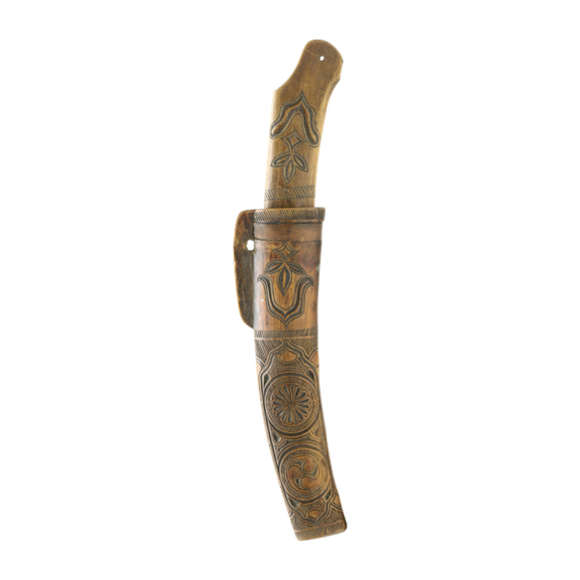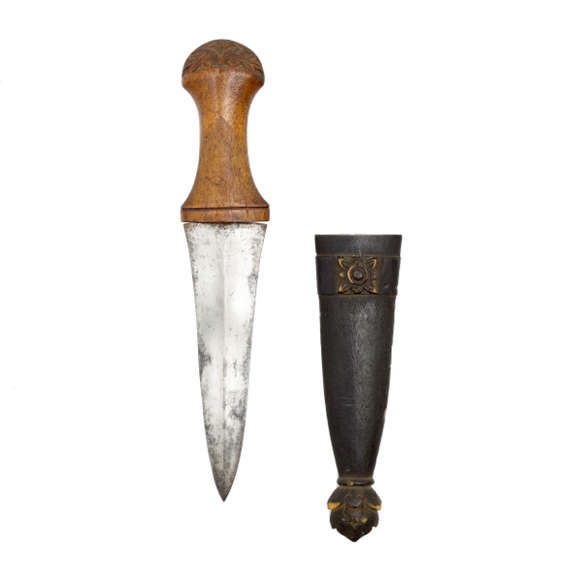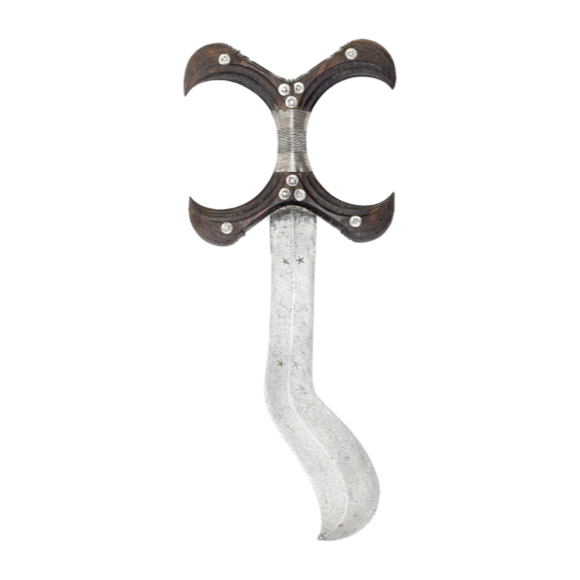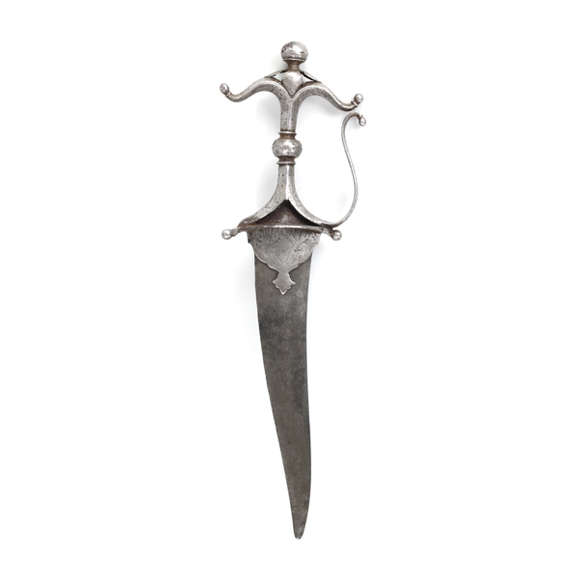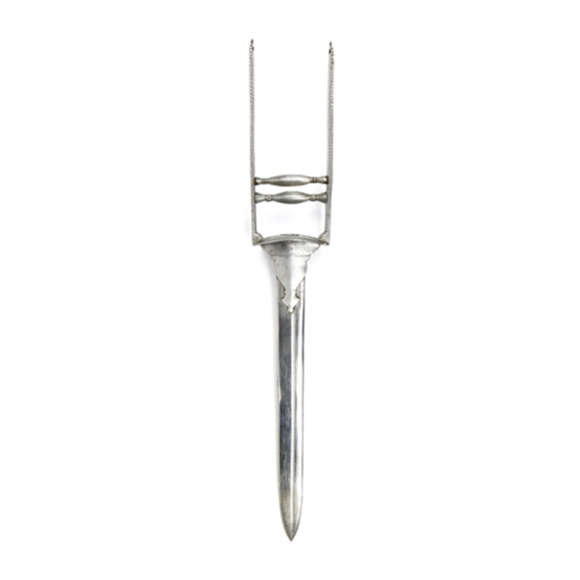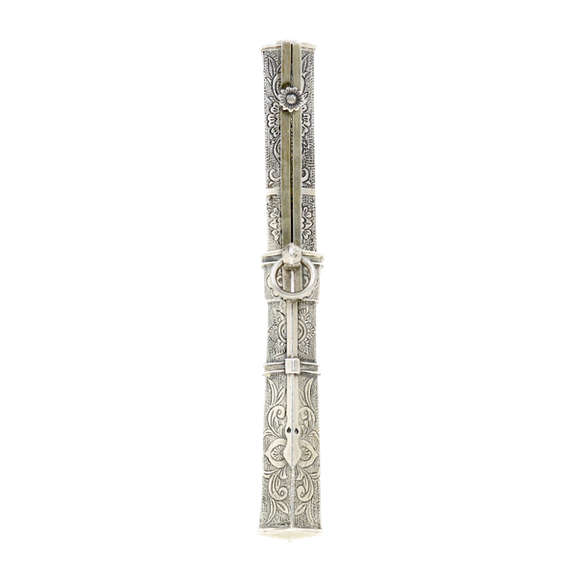Language: Ainu
Source: John Batchelor; An Ainu-English-Japanese dictionary. 1905.
Description
Makiri-ibe is the Ainu word for the knife blade of a knife called makiri.1
Makiri typically have curved, single-edged blades with a sharp point. The edge has a single bevel, on the right side. The hilt follows the same curve as the blade.
There is some unclarity about who made them. Ainu initially had their own iron and steel production facilities but a 1669-1672 revolt of the Ainu against the Matsumae clan of Hokkaido resulted in a ban on iron production and possession.2
Later sources suggest they mainly imported them, but others mention the skilful enriching of iron tools into steel by Ainu and re-working them into new product.
"...although it was strictly forbidden by the Matsumae to give iron material to the Ezo [Ainu], many iron products, including carpenters tools, had been passing to the Ezo [Ainu] for a long time. Such products were always of low quality but when the Ezo [Ainu] received them they transformed them into ones of higher quality." 3
-Furukawa Koshöken, 1788
Notes
1. John Batchelor; An Ainu-English-Japanese dictionary (including a grammar of the Ainu language). Tokyo Methodist Publishing House, 1905.
2. Yuriko Fukasawa; Ainu archaeology as ethnohistory; Iron technology among the Saru Ainu of Hokkaido in the 17th century. Pages 48-49.
3. Translation by Yuriko Fukasawa. Ibid.
Examples
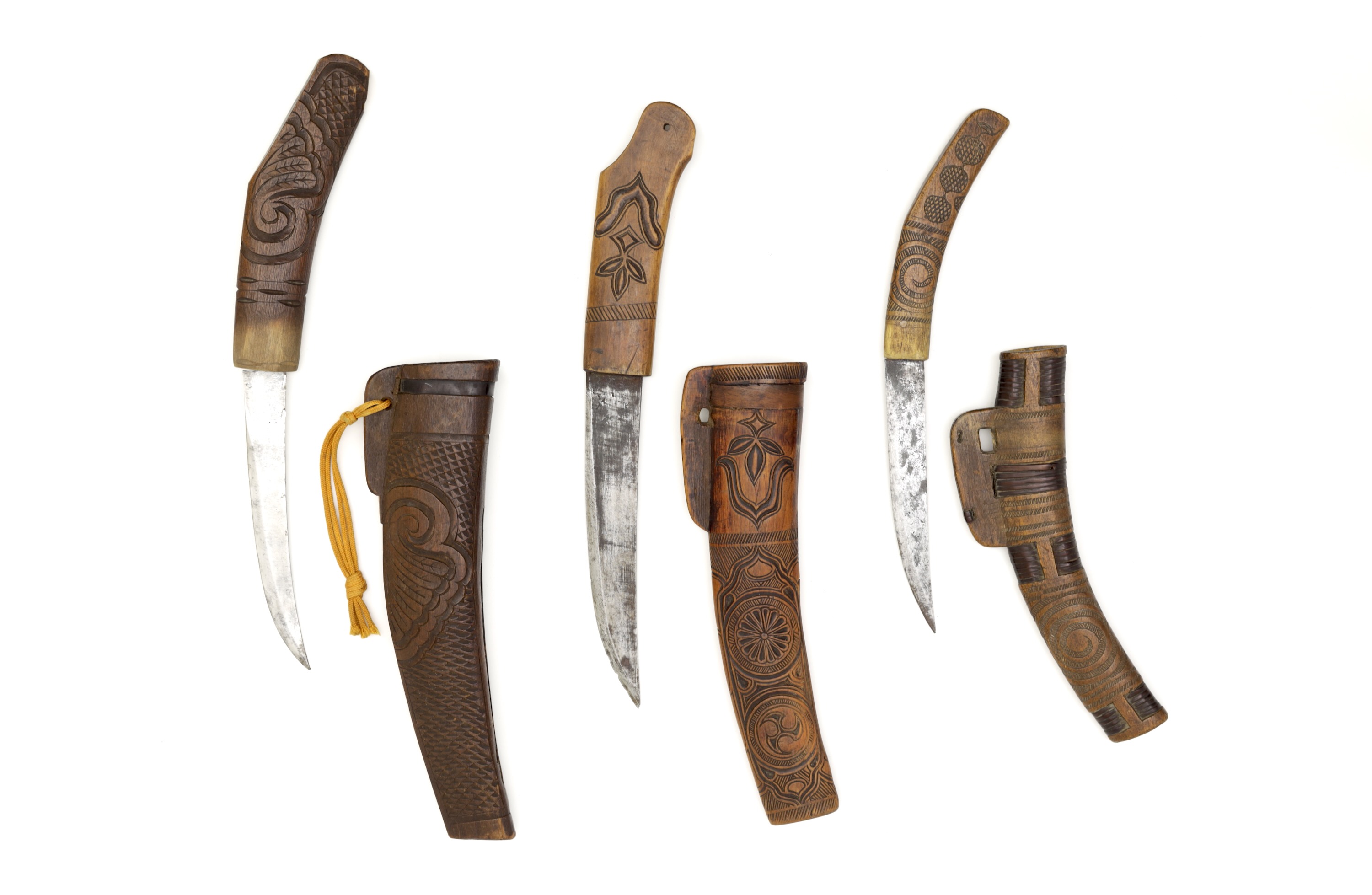
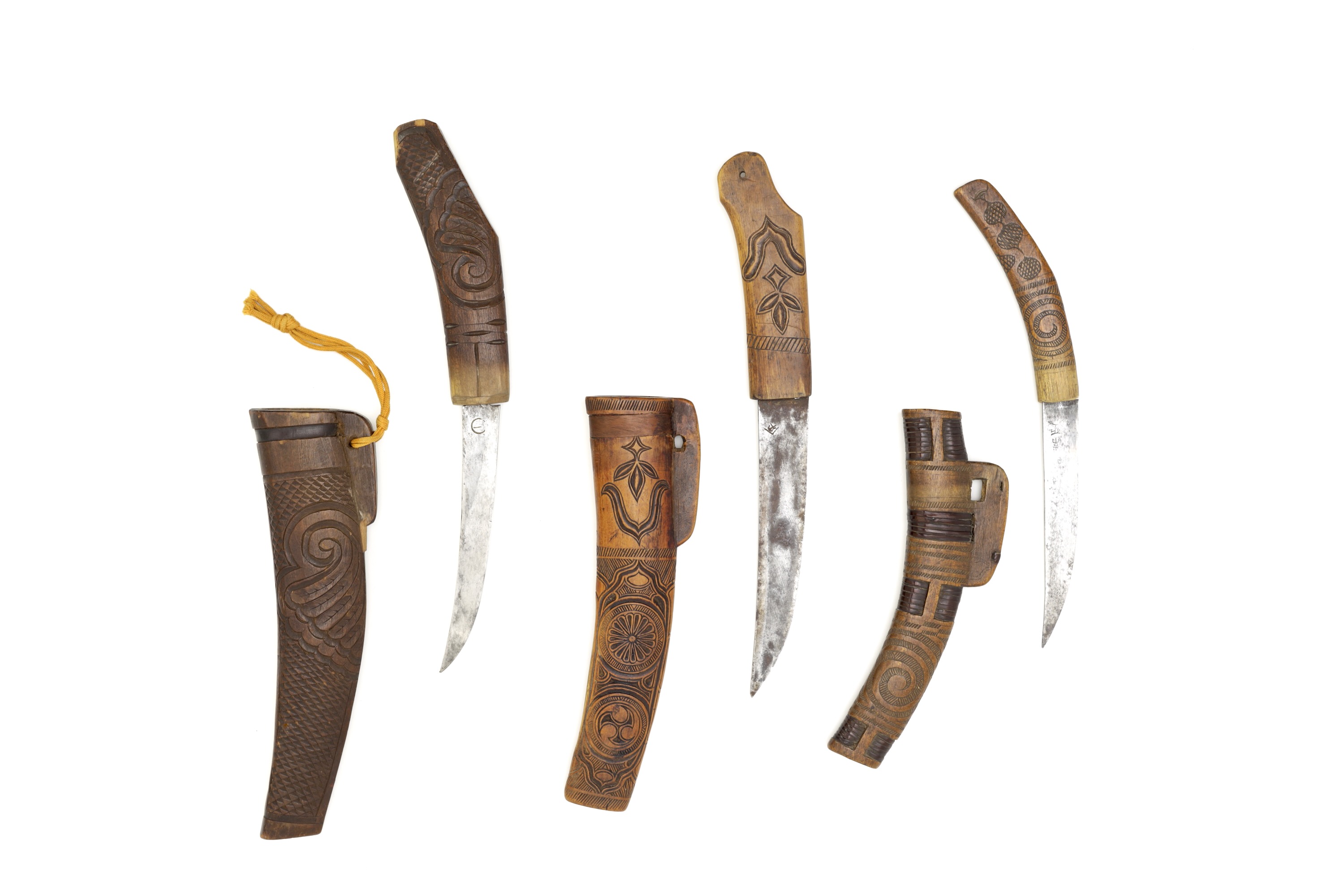
Three makiri.
Sold by Mandarin Mansion in 2022.
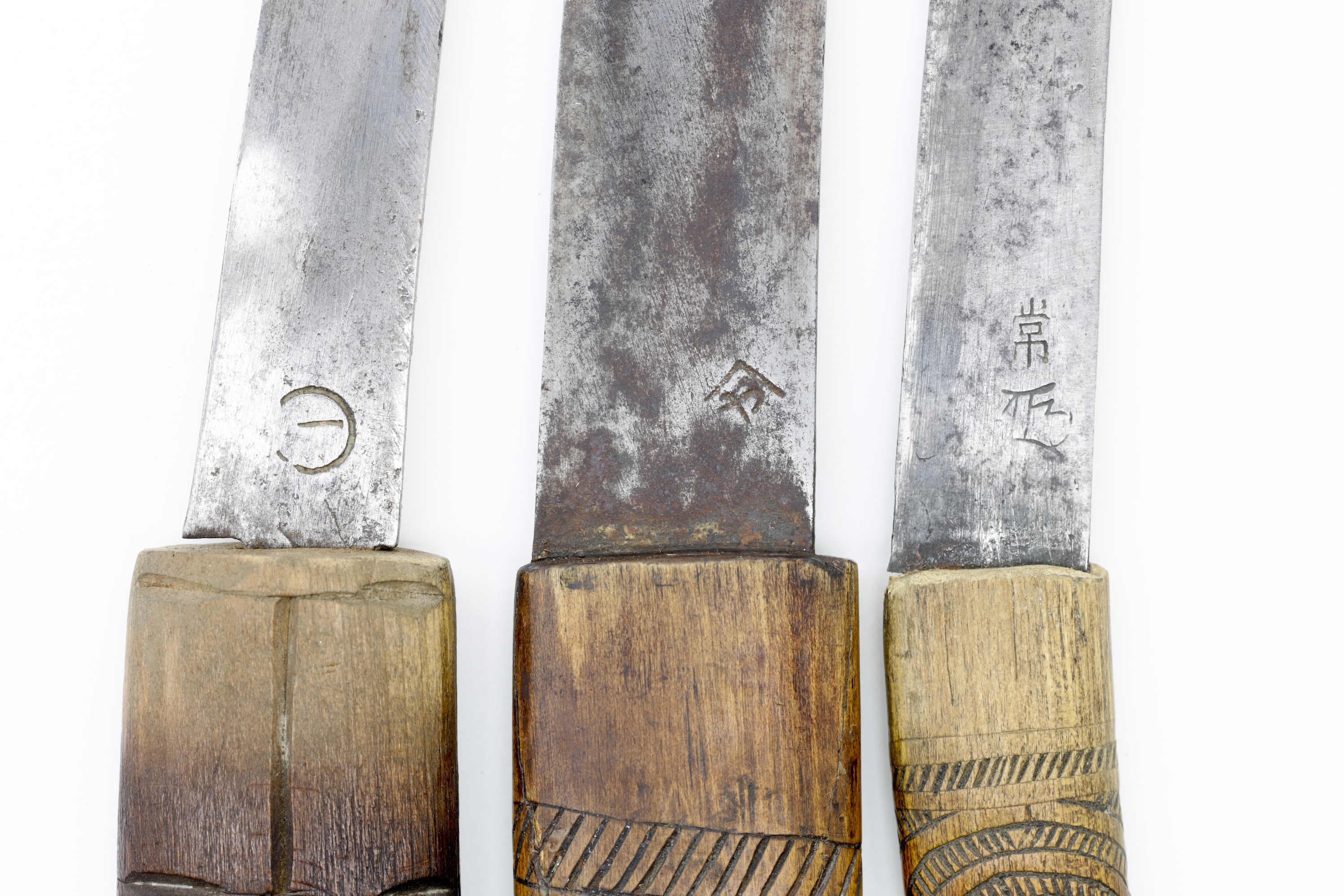
Markings on the blades.
Glossary of terms
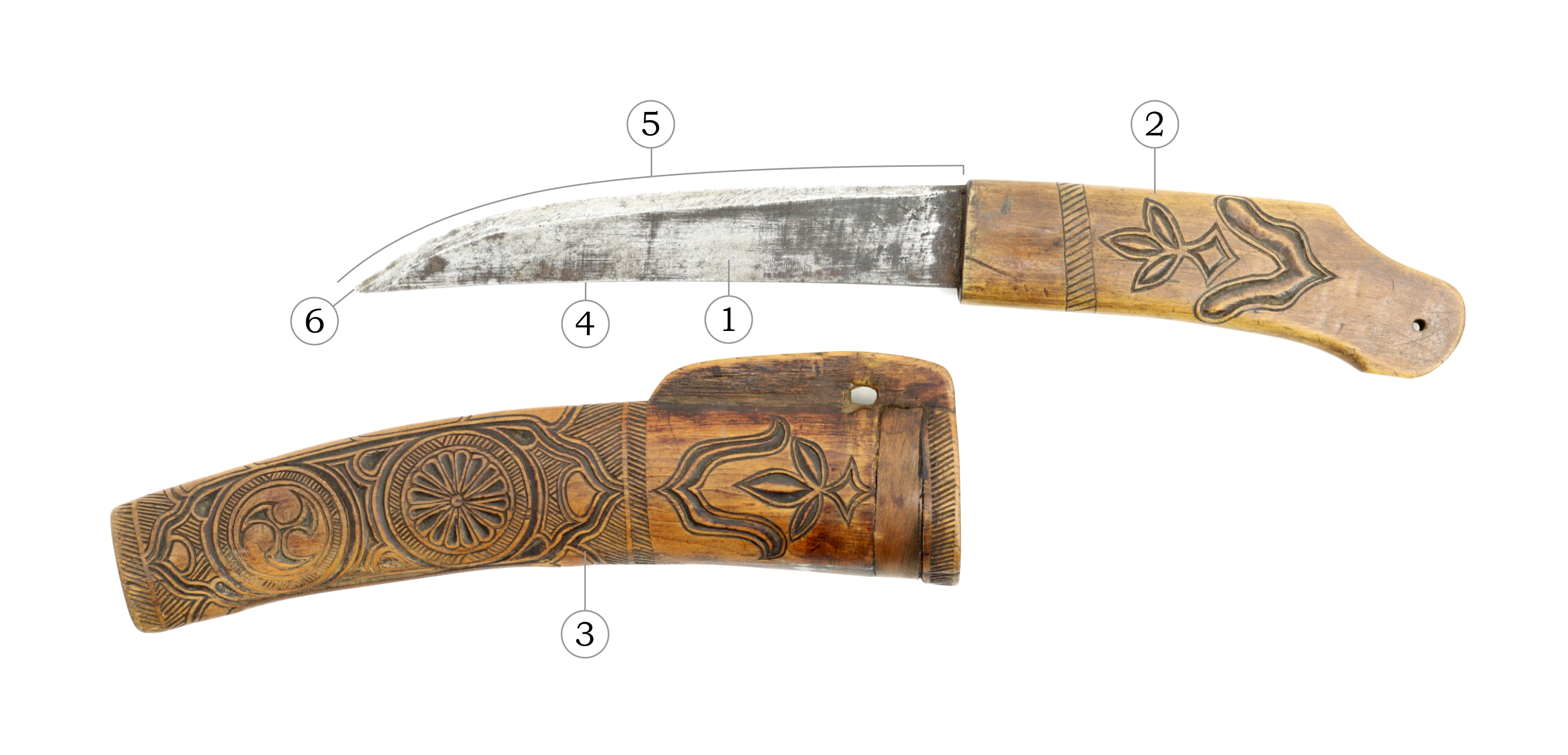
|
# |
English |
Ainu |
|
| 1 | Knife blade | makiri-ibe / ibehe | |
| 2 | Knife handle | makiri-nip | |
| 3 | Knife sheath | makiri-saya | |
| 4 | Back of knife | mekkashike | |
| 5 | Edge | notak | |
| 6 | Point of knife | kanetuhu / etuhu | |
Further reading
Main glossary article: Makiri
Article: Knives and swords of the Ainu

